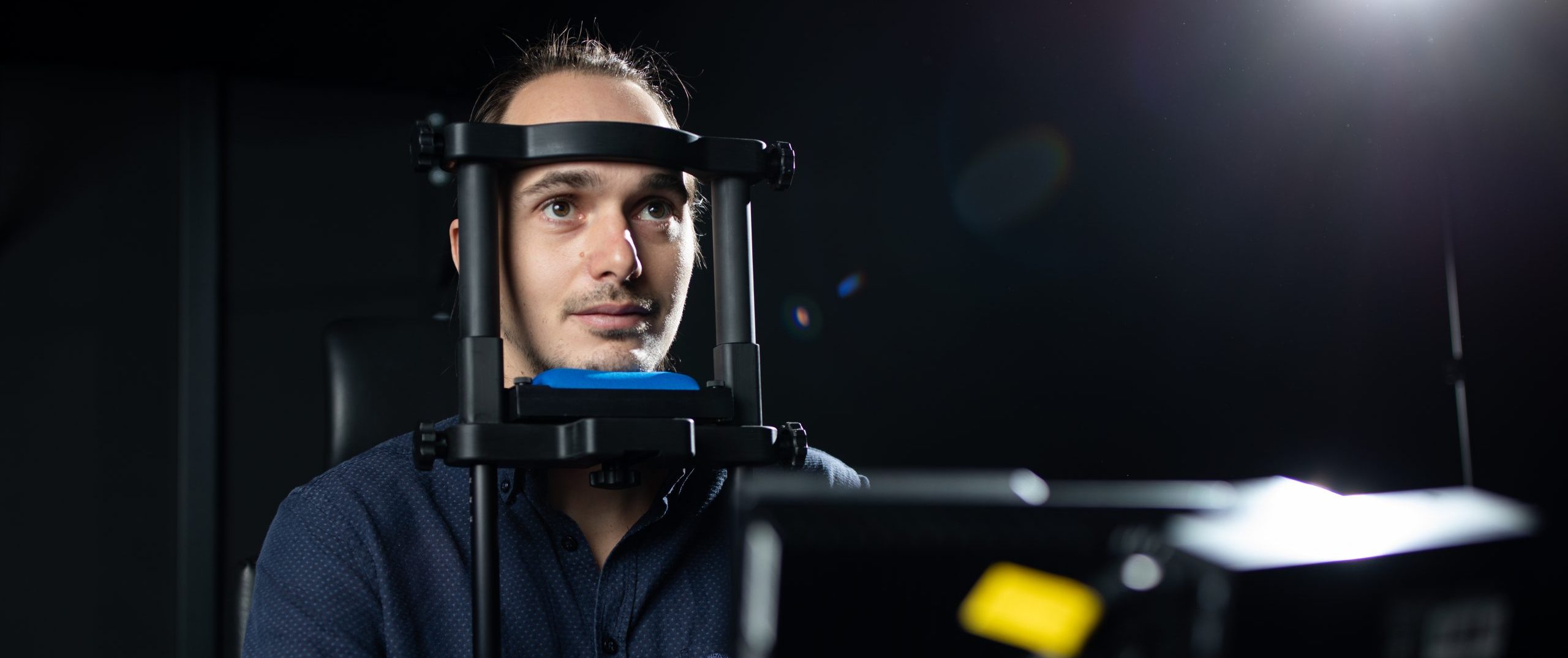What nonverbal cues reveal about online learning and robotics: Insights from a new SCIoI study
In today’s digital reality, where virtual classrooms are increasingly commonplace, it’s essential to know how to make online education as impactful as traditional face-to-face learning. A recent study conducted at Cluster of Excellence Science of Intelligence in Berlin and published in Scientific Reports by Jonas Frenkel, Anke Cajar, Ralf Engbert and Rebecca Lazarides, reveals how the subtle art of nonverbal communication can significantly enhance the online learning experience and potentially improve human-robot interactions.
In the study room
Imagine a student sitting alone in front of a computer, the glow of the screen illuminating their face. This is the modern classroom, where physical interactions are complemented by digital ones. Yet, even in this virtual setting, the connection between teacher and learner can flourish through the instructor’s nonverbal cues—eye contact, facial expressions, and gestures. This new study suggests that these social behaviors, though subtle, can improve the online learning landscape by boosting motivation and enjoyment.
A deeper look
The researchers set out to explore the impact of nonverbal immediacy (behaviors that reduce the psychological distance between instructors and learners) on learning engagement in a virtual environment. They conducted eye-tracking experiments with 87 participants, each tasked with watching instructional videos featuring social nonverbal cues like smiling, gesturing, and eye contact etc. While traditional research in this area is often limited to analyzing the effects of isolated behaviors, such as certain pointing gestures, this study took a holistic approach, examining the combined influence of multiple nonverbal cues. The findings were striking: When instructors used more expressive behaviors, participants not only felt more engaged and motivated but also focused more intently on the instructor, even though the interaction was entirely virtual.
Traditional cognitive approaches to instructional design often advocate for minimizing cues that do not directly convey information, such as smiling combined with gesturing, on the grounds that they might distract learners from the learning material. However, this perspective overlooks the social aspects of learning. This study demonstrates that the integration of these nonverbal behaviors, far from being a distraction, actually enhances motivation and enjoyment without compromising cognitive learning outcomes.
For instance, when instructors smiled and gestured naturally while explaining complex mathematical concepts in the videos, participants remained more attentive throughout the lecture. This suggests that nonverbal communication can prove to be an important tool to significantly reduce the psychological distance in online learning settings, making remote education more effective and engaging.
Beyond the study room
But the implications of this study extend beyond education. As our daily lives increasingly rely on technology, the way we interact with machines, particularly robots, is becoming an important area of research. From the industry to the household, robotic systems are already an integral part of human society. Industrial robots are, for example, assembling cars, medical robots are assisting surgeons in performing surgeries with greater precision, and vacuum robots clean our houses with minimal human intervention. But when it comes to interaction with humans, there are several challenges. Robotic systems struggle with understanding and responding to the nuances of human social behavior, language and nonverbal cues, and if we want the social interaction between robots and humans to be effective, then robots should behave like social agents and show social abilities.
Imagine a future where robots can engage with us using nonverbal cues to communicate and connect. This study’s insights could contribute to making robotic systems more intuitive and social, capable of better serving in roles ranging from customer service to healthcare.
What’s next?
The study’s authors acknowledge the need for further research, particularly in exploring specific nonverbal cues and their direct impact on cognitive learning. However, the current findings offer a promising direction. SCIoI researcher Jonas Frenkel explains, “In a world where human interaction is increasingly mediated by screens, understanding how to maintain and enhance these connections is more important than ever. Our study shows that even in digital formats, the social element—expressed through nonverbal behavior—remains vital.” In the project „Social responsiveness and its effects on learning in human-human and human-robot interaction“, led by Rebecca Lazarides and Olaf Hellwich, SCIoI scientists investigate this phenomenon further.
For educators, integrating nonverbal immediacy into video lectures can make a significant difference in a learner’s engagement and satisfaction. For technologists and roboticists, these insights can inform the design of robots that not only perform tasks but also connect with users on a social level.





